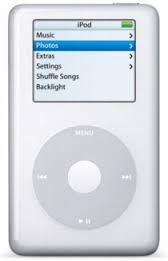 Emmis-owned TagStation, which produces and distributes the NextRadio broadcast listening app for smartphones, released usage statistics for the program’s first 100 days of live operation. Headline brags are:
Emmis-owned TagStation, which produces and distributes the NextRadio broadcast listening app for smartphones, released usage statistics for the program’s first 100 days of live operation. Headline brags are:
- 75,000-plus app downloads
- 5,100-plus FM stations tuned from the app
- 33,000-plus listening hours total
In addition to the usage metrics, distribution is widening. NextRadio was first installed on Sprint phones equipped with FM receiver chips that are necessary for the app to work. That footprint was widened to HTC’s One Max phone a couple of weeks ago. TagStation today pre-announced an upcoming partnership with Boost Mobile in January.
The chip requirement means that NextRadio can only work with participating phone models, and, in fact, is not available at all from the Google Play app store when accessed by unequipped phones. A “stub” version of the app is built into partner phone models, and that stup must be activated before use. The activation accounts for the “download” metric above.
 NextRadio is an interesting mobile broadcast play that seeks to leverage radio’s traditional mobility in an increasingly smartphone-dominated world. It also seeks to correct a blank spot that was arguably created by Apple. When Apple introduced the first iPod, it launched into an existing MP3-player market whose devices usually contained AM/FM receivers. Their manufacturers assumed some demand for radio listening along with MP3 mobility.
NextRadio is an interesting mobile broadcast play that seeks to leverage radio’s traditional mobility in an increasingly smartphone-dominated world. It also seeks to correct a blank spot that was arguably created by Apple. When Apple introduced the first iPod, it launched into an existing MP3-player market whose devices usually contained AM/FM receivers. Their manufacturers assumed some demand for radio listening along with MP3 mobility.
Apple’s iPods have never included broadcast reception, and as that mobile-player brand took over the market, walk-around FM listening fell off the default spec sheet for handheld music devices. NextRadio puts it back in, but requires special device builds to accomplish it. For that reason, roll-out of the NextRadio app is dramatically slowed.
In addition to competing with non-compatible phones, NextRadio competes with Internet delivery of radio webcasts, especially via aggregating platforms TuneIn and iHeartRadio. That might seem like a crippling disadvantage to user adoption, and OEM adoption. NextRadio’s big advantage is that the Internet (and a costly data plan for receiving it) is not necessary. You just have to be in range of local stations.
We like NextRadio in concept, even as we recognize the app’s steep uphill climb. Here in the RAIN editorial office’s gadget museum, we have treasured MP3 players built years ago, with FM receivers still in use. They key to NextRadio success is to demonstrate demand for smartphone-received FM, sufficient to motivate OEMs to put that chip into their handhelds — like the old days.
